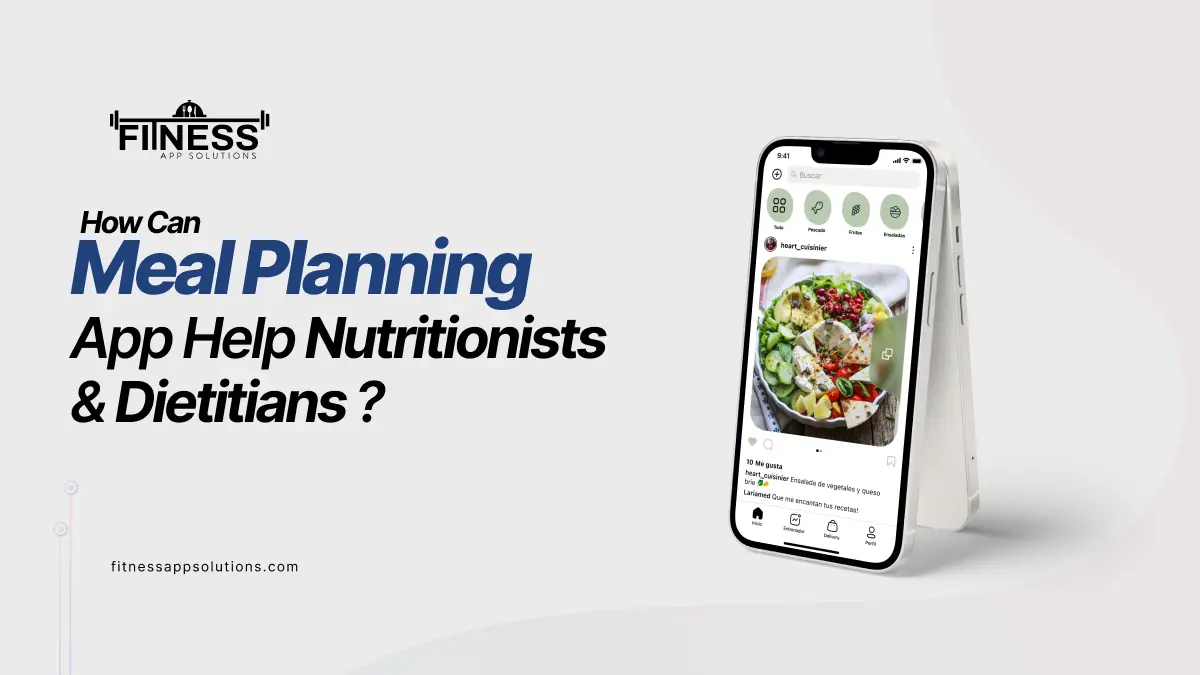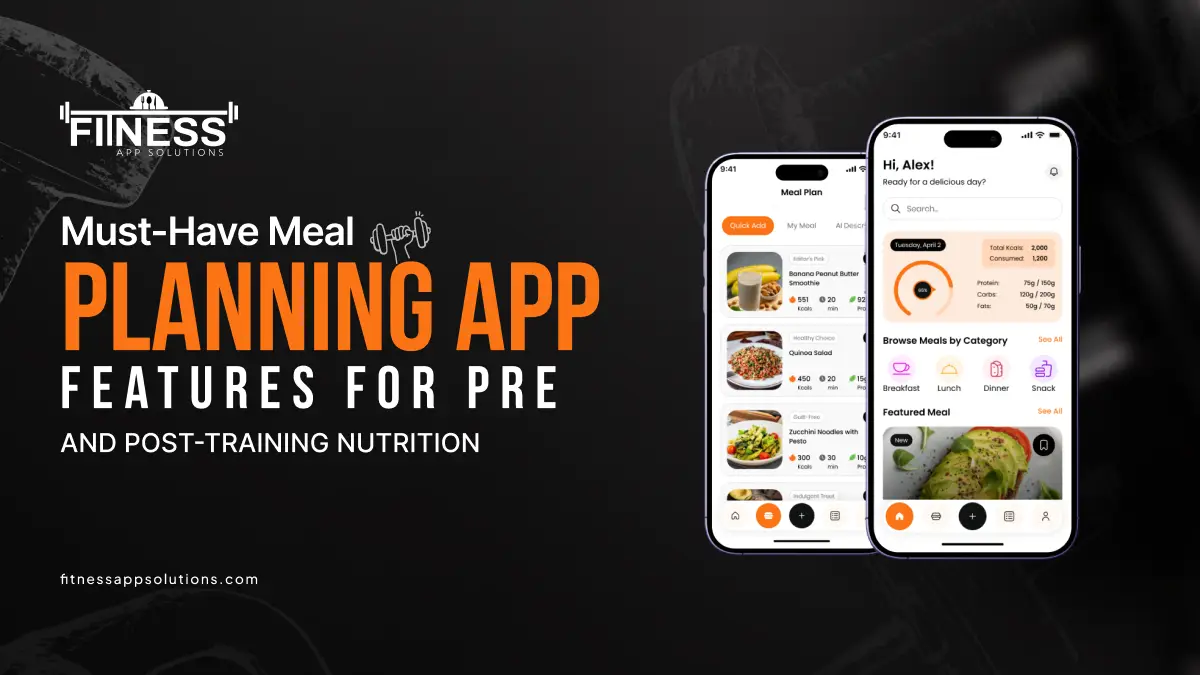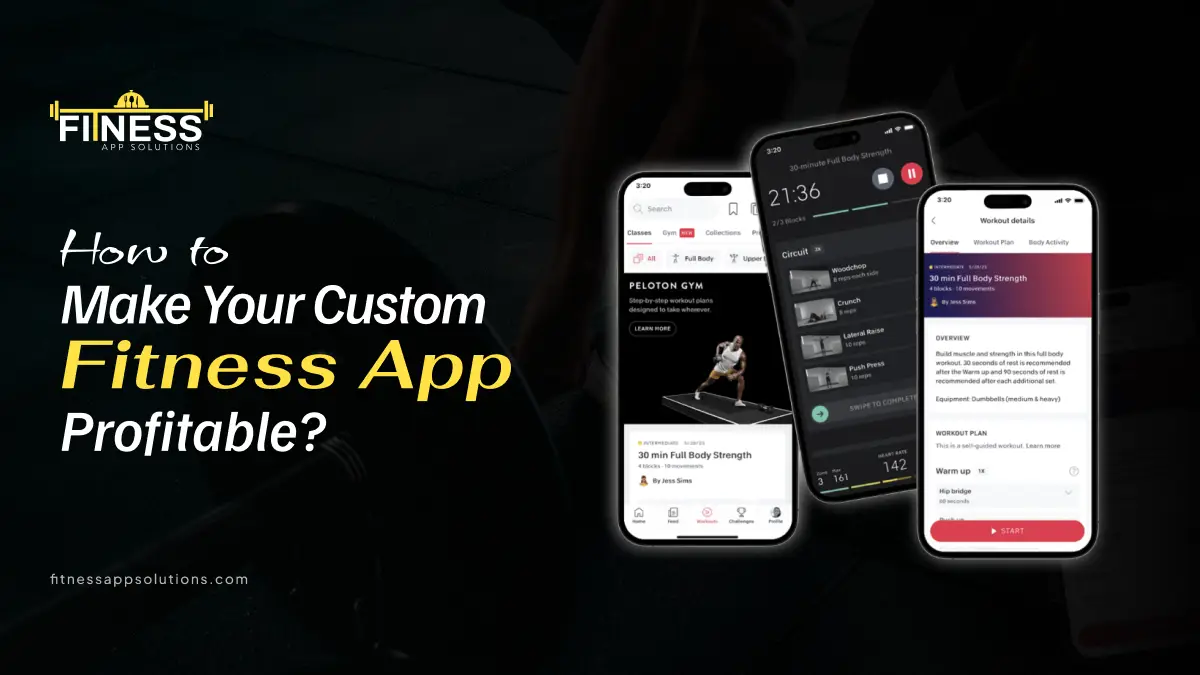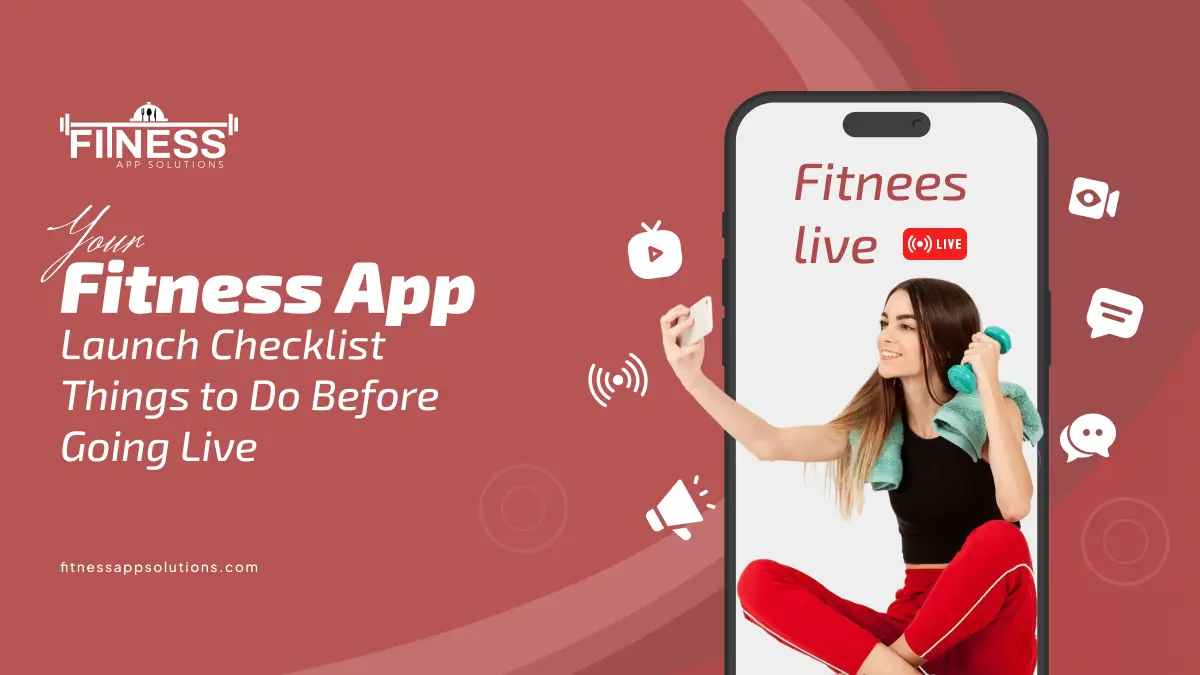Meal planning is a core component of the practice for nutritionists and dietitians. Whether it is creating customized meal plans to manage health conditions or helping clients achieve their fitness goals, meal planning plays a crucial role in improving clients’ overall well-being.
However, the process can be time-consuming, complex, and sometimes overwhelming, especially when tailoring plans for multiple clients with different needs and preferences.
With advancements in technology, meal planner apps have emerged as a powerful tool that helps nutritionists and dietitians to save time, reduce errors, and provide better service to their clients. These apps can simplify and automate many aspects of meal planning, making the process more efficient and accurate.
Meal Plan Solutions provides nutritionists and dietitians proper assistance in developing their own meal planner app to help clients fulfil their health goals effectively. In this detailed blog, you will know how these apps help nutritionists and dietitians prepare meal plans, as well as how they can enhance client satisfaction and overall productivity.
How does Meal Planner App Help Nutritionists and Dietitians to Prepare Meal Plans?

Meal planner app is quite helpful for nutritionists and dietitians to prepared tailored diet plans for many audiences by:
Streamlining the Diet Planning Procedure:
Traditionally, dietitians and nutritionists used to create meal plans manually. It was a time-consuming procedure.
This often involves a series of tasks like assessing client’s needs, researching meal options, calculating nutritional values, and designing a meal schedule that fits into the client’s lifestyle. And this procedure needs to be repeated for every client.
This is where meal planning apps step in. By using these apps, dietitians can automate the meal planning process and create customized meal plans much faster.
Most apps allow dietitians to input important data such as the client’s age, weight, health status, food preferences and fitness goals. Based on this information, the app can generate meal plans that align with these specifications.
The benefit of this is that once the parameters are set, the app can create meal plans instantly, saving time. This also eliminates the need to search for new recipes or manually track nutritional information, which can be extremely stressful.
Customizing as Per Customers’ Needs:
One of the primary roles of a dietitian or nutritionist is to ensure that meal plans are tailored to each client’s unique needs.
Whether it includes helping someone lose weight, manage diabetes, or build muscle, the meal plans need to be adjusted according to the client’s specific goals, lifestyle, and medical conditions.
Meal planning apps provide the flexibility to create highly personalized meal plans. Depending on the app, dietitians can account for:
Age and Gender:
Nutritional needs vary according to age and gender. A child will need a different number of calories compared to an adult, and the needs of a post-menopausal woman may differ from those on menstrual stage.
Health Conditions and Medical History:
Some clients have specific health conditions that require dietary modifications, such as diabetes, Anxiety, hypertension, or celiac disease. Meal planning apps allow dietitians to input these conditions and automatically suggest meals that align with these dietary restrictions.
Fitness Goals:
Some clients may need to increase muscle mass, while others are focused on weight loss. Apps help dietitians create meal plans that provide the right balance of macronutrients (proteins, fats, carbohydrates, etc.) to help clients reach their goals.
Dietary Preferences and Restrictions:
Whether clients are vegetarian, vegan, gluten-free, or following other specialized diets (e.g., keto, paleo), meal planning apps allow dietitians to filter recipes and foods according to these preferences.
In short, meal planning apps give dietitians the flexibility to design meal plans that are as unique as the client’s, ensuring that the plans align with both their health goals and their personal preferences.
Access to All the Nutritional Information:
One of the biggest challenges in meal planning is ensuring that meals meet all the necessary nutritional requirements. Dietitians need to make sure that clients get the right amount of protein, fiber, vitamins, minerals, and other nutrients to support their health. Meal planning apps solve this issue by providing detailed nutritional breakdowns for every recipe and ingredient.
These apps automatically calculate the nutritional content of each meal, including calorie count, macronutrient ratios (carbs, proteins, and fats), and micronutrient levels (vitamins, minerals, etc.).
For instance, if a client needs to consume a certain amount of protein per day, dietitians can easily track the protein content of each meal in the app. This makes it much easier to ensure that the client’s diet is balanced and aligned with their goals. Many apps also allow dietitians to adjust portion sizes and recipe ingredients based on the client’s individual needs.
Reducing Errors in Meal Planning:
Creating personalized meal plans manually involves the risk of errors. Whether it’s calculating the wrong portion size, overlooking a food allergy, or failing to meet the nutritional requirements, these mistakes can negatively impact a client’s health and progress. Meal planning apps help mitigate these risks by automatically calculating portion sizes and nutritional values. With inbuilt algorithms, the app ensures that the meal plans meet all the necessary nutritional requirements and complement the client’s dietary restrictions.
For instance, if a client is allergic to nuts, the app will automatically filter out recipes containing nuts. If the client is diabetic, the app will prioritize meals that are low in sugar and carbohydrates. By removing the need for manual calculation and adjustment, these apps significantly reduce the chance of errors.
Recipe and Ingredient Database:
Meal planning apps often come with extensive recipe databases, which means dietitians don’t have to spend time searching for new, healthy recipes. These databases are typically organized by dietary preferences, meal types (e.g., breakfast, lunch, dinner), and health conditions (e.g., heart-healthy, diabetic-friendly), making it easy for dietitians to find appropriate meals for their clients.
Most apps offer a wide variety of recipes, complete with ingredients, step-by-step instructions, and cooking tips. In addition, these apps often have the functionality to swap ingredients or adjust serving sizes to cater to the client’s specific needs.
Beyond just providing recipes, some apps allow users to upload their own custom recipes. This gives dietitians the ability to personalize the meal plan even further by incorporating their own tried-and-tested dishes or client favorites.
Grocery List Creation Feature:
One of the most practical features of meal planning apps is their ability to generate shopping lists based on the meal plan. Once a meal plan is created, the app will automatically generate a shopping list that includes all the ingredients required for the planned meals. This saves both the dietitian and the client’s time, as they no longer need to manually create shopping lists.
The shopping list is often categorized by food type (e.g., fruits, vegetables, dairy, etc.), making it easy to navigate through the grocery store. Some apps even integrate features that allow clients to order groceries online through the app, further streamlining the process.
Tracking and Feedback:
Tracking client progress is an important part of a dietitian’s job. To understand how well a meal plan works, dietitians need to keep track of various metrics such as weight, energy levels, and even health parameters like blood pressure or blood sugar levels.
Meal planning apps often include features that allow clients to log their daily food intake, exercise habits, and other key metrics. Some apps even allow clients to rate their meals or provide feedback on how the meals made them feel.
This real-time feedback is invaluable for dietitians as it helps them understand how well the meal plan works. If a client isn’t seeing the desired results or has complaints about certain meals, the dietitian can adjust the plan quickly.
Additionally, this data can be used for future meal planning, ensuring that the meal plans evolve based on the client’s progress.
Client Management Enhancement:
Meal planning apps often come with educational resources such as articles, videos, and cooking tutorials. These resources can be shared with clients to help them in understanding nutrition and healthy eating habits. Dietitians can also use these resources as part of their counseling sessions to educate clients about various nutrition-related topics. Providing educational materials not only empowers clients but also helps them take ownership of their health. The more informed a client is about nutrition, the more likely they are to stick with the meal plan and make healthier choices on their own.
Increase in Customer Retention:
Client retention is an essential factor for any dietitian or nutritionist. When clients see progress and feel supported throughout their wellness journey, they are more likely to continue working with their dietitian long-term. Meal planning apps can significantly improve client satisfaction by providing a streamlined and user-friendly meal planning experience. Clients appreciate having easy access to their meal plans, grocery lists, and progress tracking tools all in one place.
Furthermore, the ability to communicate with their dietitian through the app fosters a sense of connection and ongoing support. Satisfied clients are more likely to refer others to the dietitian, helping grow their client base and build a stronger reputation in the industry.
Cost Effective:
Although almost every meal planning app comes with a subscription fee, the benefits often complement the costs. By streamlining the meal planning process, these apps allow dietitians and nutritionists to take on more clients and increase their productivity. They also save time that dietitians would otherwise spend on manual meal planning, which can be better spent on other aspects of their practice, such as follow-ups and client consultations.
Additionally, many apps offer a subscription-based pricing model, which can be easily factored into a dietitian’s service fee. This makes the app an affordable investment with a high return on investment (ROI), both in terms of time saved and client satisfaction.
Additional Benefits of Meal Planner Apps for Nutritionists and Dietitians: –

User -Friendly Interface:
Most apps are designed to be intuitive, making it easy for nutritionists and dietitians to navigate and use effectively.
Real-Time Adjustments:
Allows for quick modifications to meal plans based on client feedback or changing health conditions.
Integration with Fitness Trackers:
Some apps can sync with fitness devices to provide a comprehensive view of a client’s health and activity levels.
Client Accountability:
Encourages clients to stay on track with their meal plans by providing reminders and notifications.
Recipe Modification:
Enables dietitians to easily swap ingredients or adjust serving sizes to better fit client needs.
Collaboration Features:
Some apps allow for shared access, enabling clients and dietitians to work together on meal planning.
Cultural and Regional Recipe Options:
Offers diverse recipes that cater to various cultural preferences and dietary practices.
Meal Prep Guidance:
Provides tips and strategies for meal prepping, helping clients save time and stay organized.
Data Analytics:
Offers insights and analytics on client progress over time, helping dietitians refine their approaches and strategies.
Wrapping Up
Meal planning is a fundamental part of a dietitian’s or nutritionist’s job, and using the right tools can make a world of difference in the quality of service they provide. Meal planning apps not only simplify the meal planning process but also make it more personalized, accurate, and efficient.
From creating customized meal plans to tracking client progress, these apps provide all the resources needed to enhance the overall client experience. For dietitians and nutritionists, meal planning apps are an indispensable tool that can save time, reduce errors, improve client satisfaction, and ultimately help clients achieve their health and wellness goals more effectively.
As technology continues to evolve, meal planning apps will remain an essential part of the nutrition and dietetics industry, empowering professionals to provide better care and support to their clients.
Frequently Asked Questions (FAQs)
What is a meal planner app?
A meal planner app is a digital tool designed to help nutritionists, dietitians, and individuals create, organize, and manage meal plans.
Are meal planner apps easy to use?
Yes, most meal planner apps are designed with user-friendly interfaces that make them easy to navigate.
How do meal planner apps help with client progress tracking?
Many meal planner apps include features that allow clients to log their daily food intake, exercise habits, and other health metrics.
Can clients access meal plans through the app?
Yes, many meal planner apps allow clients to access their meal plans directly through the app.
How do I choose the right meal planner app?
When selecting a meal planner app, consider factors such as user-friendliness, features offered (e.g., recipe database, nutritional analysis, grocery list generation), compatibility with your practice, and client needs.



